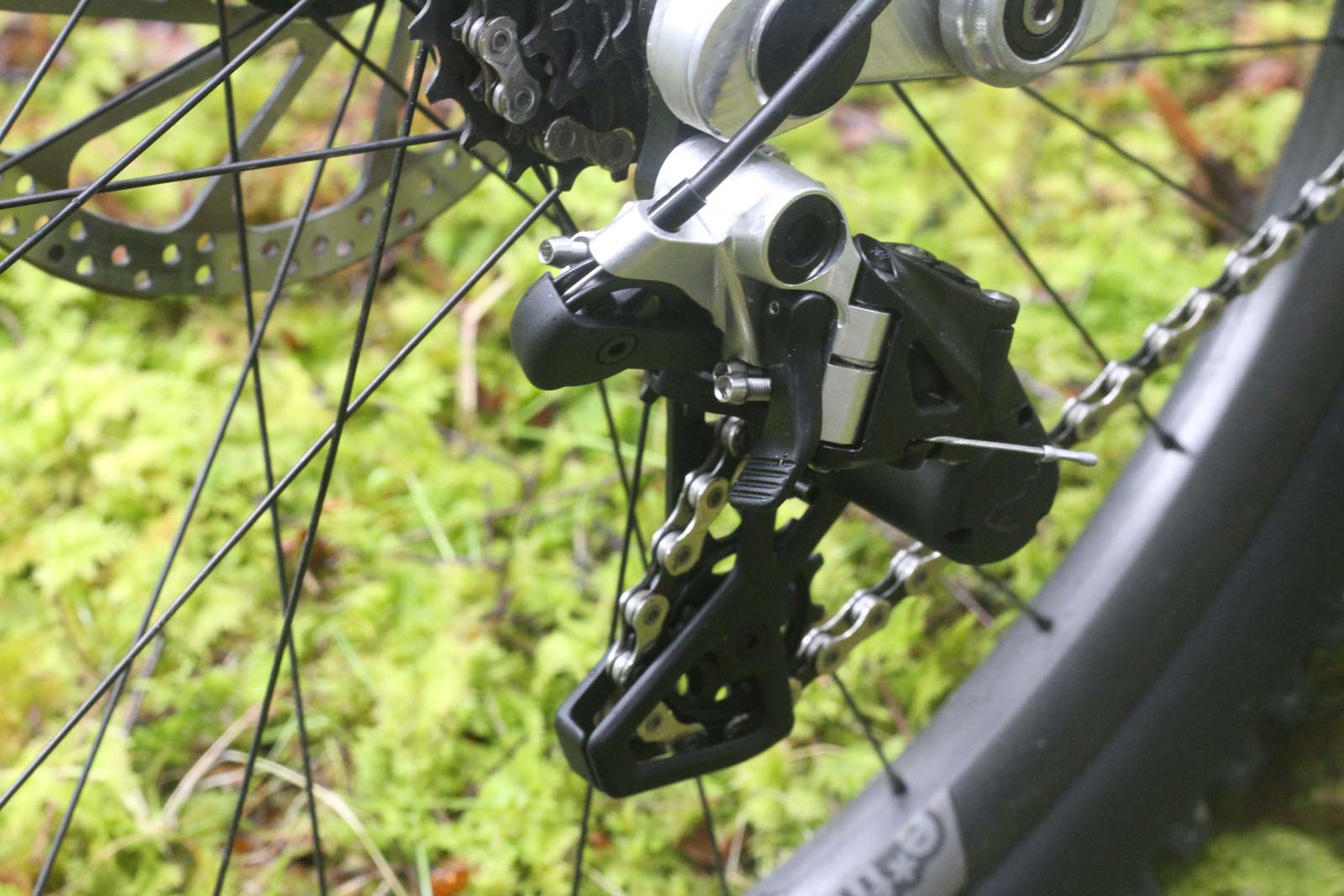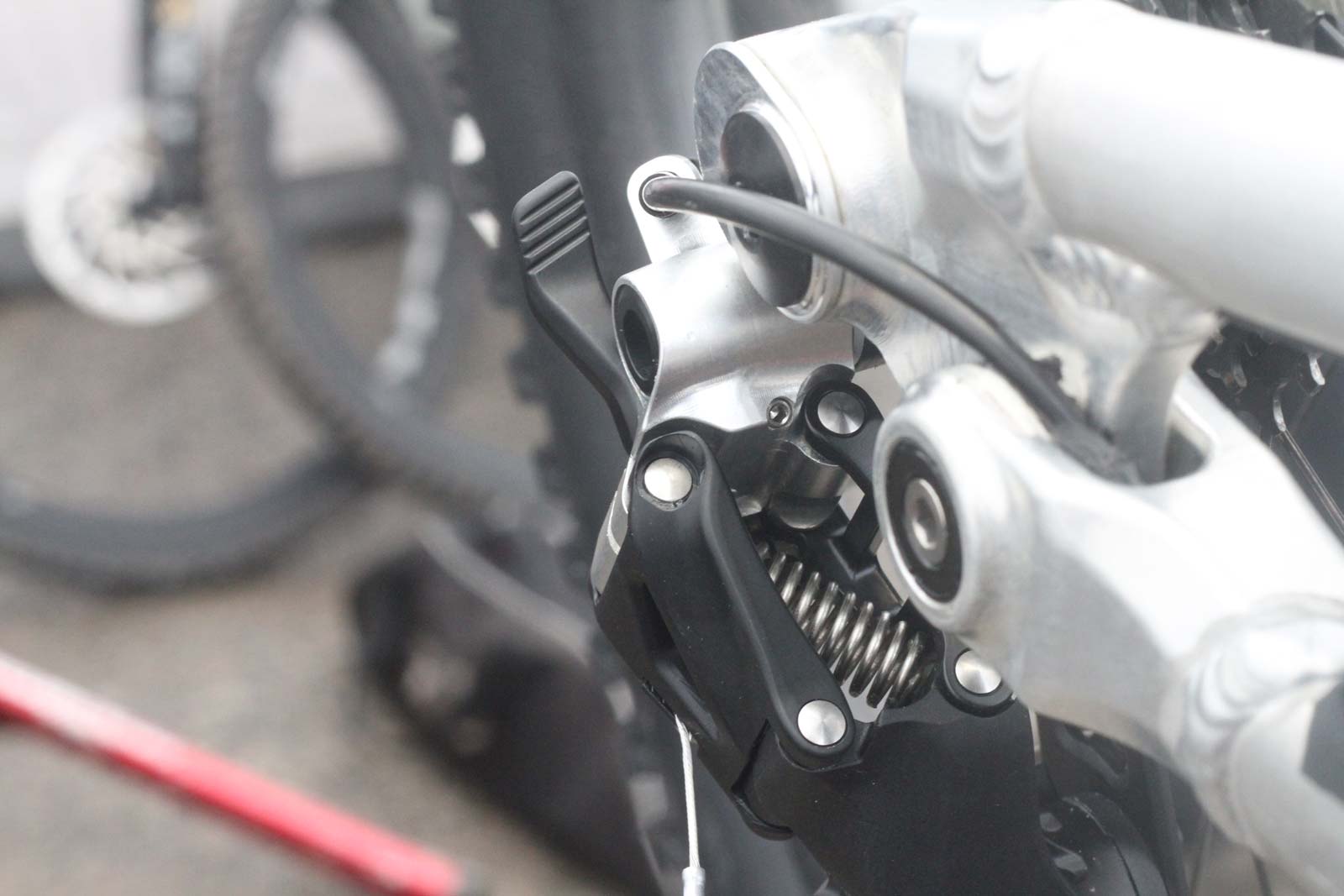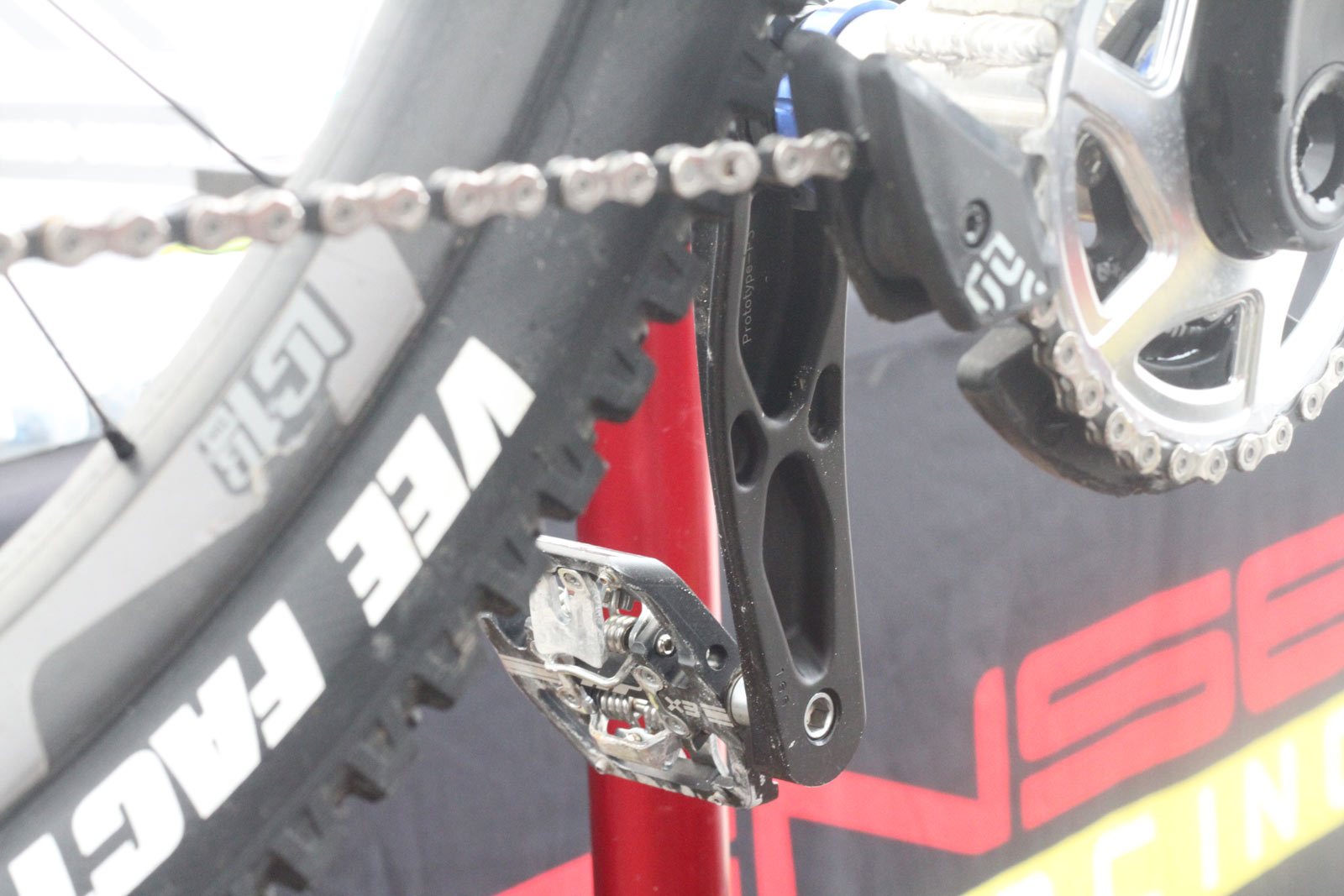After several soggy laps of the pits at Fort William World Cup, we were rewarded with a handful of fresh new tech to share with readers. A highlight would have to be Aaron Gwin’s prototype Intense DH Bike with i-track suspension, as well as Camille Balanche’s almost production Commencal Supreme DH V5. We also got eyes on the new RAAW DH bike that is still under development, raced by KJ Sharp and other members of the 555 Gravity Racing Team (more info to come), as well as sneak peeks at a bunch of componentry that is yet to make it to production. Most of it we have very little information on, but still felt it was worth sharing photos for curiosity’s sake. Feast your eyes.
Fresh Tech from Round 2 UCI World Cup Downhill in Fort William

Gwin’s bike had more than its fair share of prototype componentry; his mechanic, John Hall, gave us some insight on the prototype TRP DH7 derailleur, development of which is still ongoing. John played a big part in the development of TRP’s derailleurs, having invented the “Hall Lock”, which is essentially a clutch mechanism for the derailleur’s B-Knuckle. The Hall Lock is present on the current DH7 derailleur, and the TR12 for 12-speed cassettes, but its design is further refined on the prototype we saw on Aaron Gwin’s bike (incidentally, we spotted a prototype TR12 recently, too).

John tells us the idea to introduce what is essentially a lock for the derailleur’s B-Knuckle came from the desire to keep drivetrain noise to a minimum. On a regular derailleur, say from SRAM or Shimano, just as the cage can articulate about the B-Knuckle in accordance with its chain tensioning function, the position of the B-Knuckle itself is able to pivot about the mounting bolt, a function that is necessary to allow the rear wheel to be removed.
It is not, however, necessary for the derailleur’s primary function of shifting the chain through the different sprockets of the cassette. This movement can create noise when riding rough downhill tracks, something that most riders, including Aaron, could definitely live without. So, John created the Hall Lock, which locks the B-Knuckles position relative to the mounting bolt, eliminating movement and any noise associated with it.
John stresses that he is by no means the first person to attempt to make drivetrains quieter, stating that plenty of World Cup mechanics have been machining various solutions over the years in a bid to keep their riders’ bikes running as quietly as possible.

The Hall Lock seen on the current DH7 and TR12 derailleurs is adjustable by virtue of a set screw that can be seen on the machined body of the derailleur, with the Allen head pointing toward the front of the bike. This is still present on the prototype DH7 seen on Gwin’s bike, but John tells us they are working on a solution to eliminate this adjustment, so that the Hall Lock is a simple on-off switch that doesn’t loosen over time.
The goal is for the Hall Lock’s tension to hit a sweet spot whereby the B-Knuckle isn’t able to move under normal riding conditions, but it is able to move when the derailleur is hit off a rock, in order to avoid catastrophic, race-ending damage. So, even with the Hall Lock on, you can still move the B-Knuckle if you apply enough force.
John wasn’t able to share any details on other changes to the TRP DH7, stating only that it is made of a mix of composites and aluminum.
In addition to the prototype derailleur, Gwin’s bike was also fitted with what we believe to be a prototype TRP crankset.
Elsewhere on Gwin’s bike, new rubber from Vee Tire Co was seated to the e*Thirteen LG1R DH wheelset. “Vee Factory Ride” were the only words printed on the hot patch, but a spare tire sat on John Hall’s workbench featured the words “No Sharpie” indicative of a Vee prototype. Indeed, we’ve not seen this particular tread pattern on any of Vee Tire Co’s production tires, so expect to see fresh rubber from those guys later on this year.


Elsewhere in the pits, GT Factory Racing were on a new GT Fury, which appears to have a revised linkage design whereby the rocker sits inboard of the seat tube struts. No close-ups of this cleaned up specimen were permitted, but we were allowed to get a look at one sat outside in the rain, covered in Fort William’s worst. The front triangle has certainly seen an overhaul.

A new flip-chip at the lower shock mount looks as though it may offer more than the two positions offered on the current Fury, with capacity to alter the fore-aft position as well as the vertical position. We reckon this could offer opportunity to alter the linkage’s overall progression as well as the bike’s bottom bracket height.








